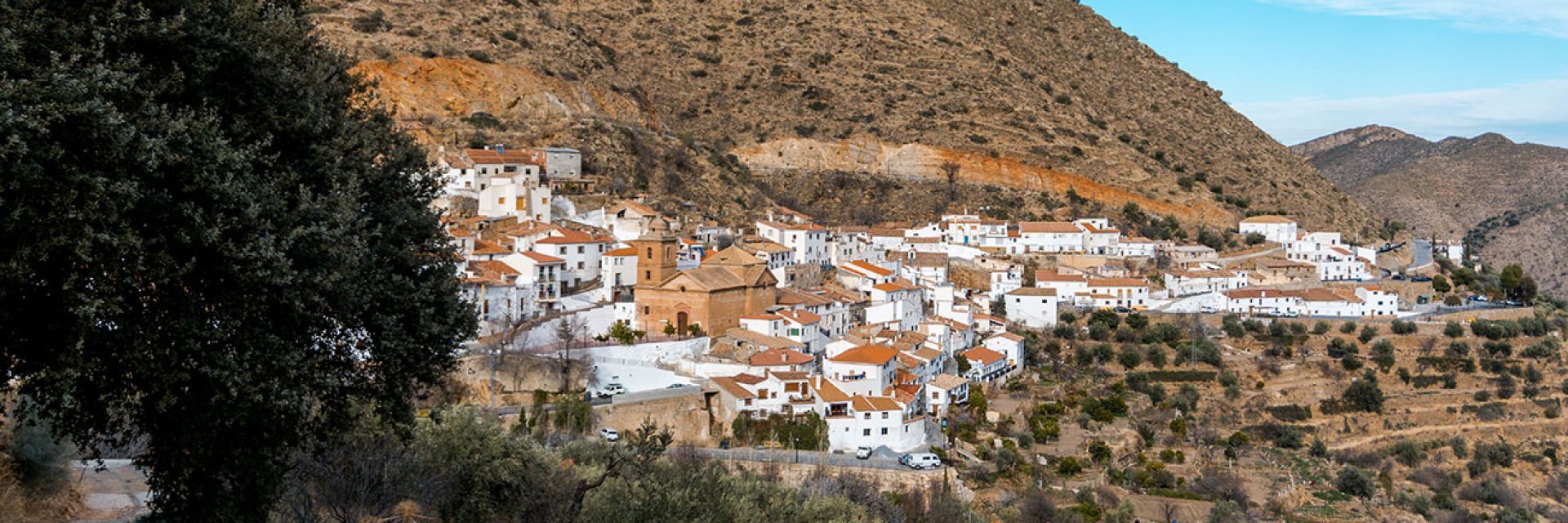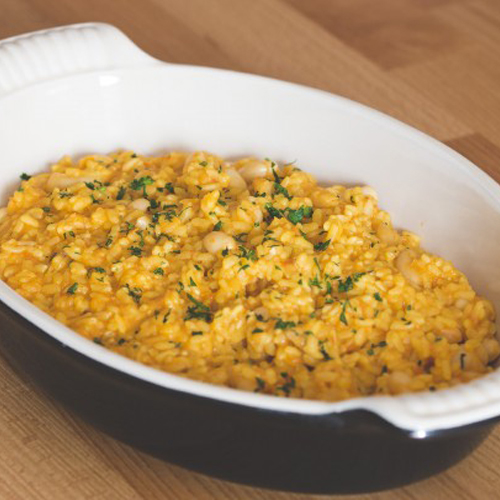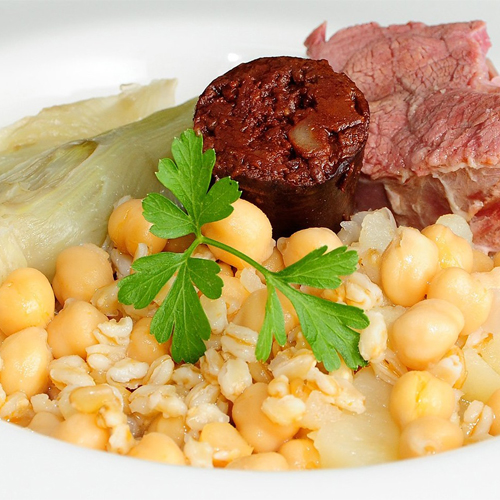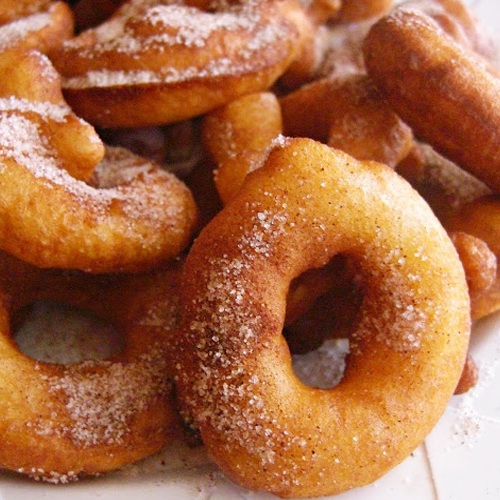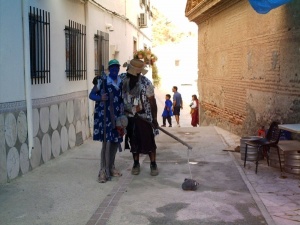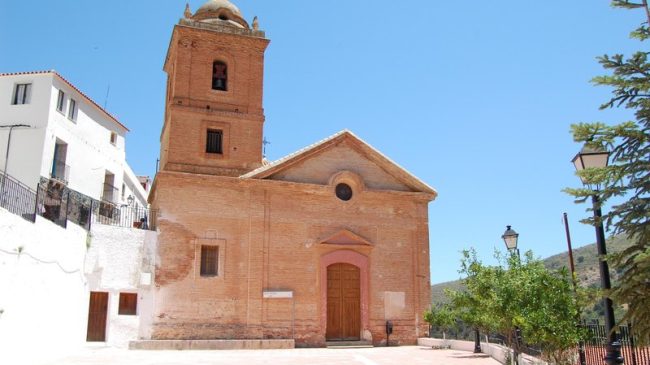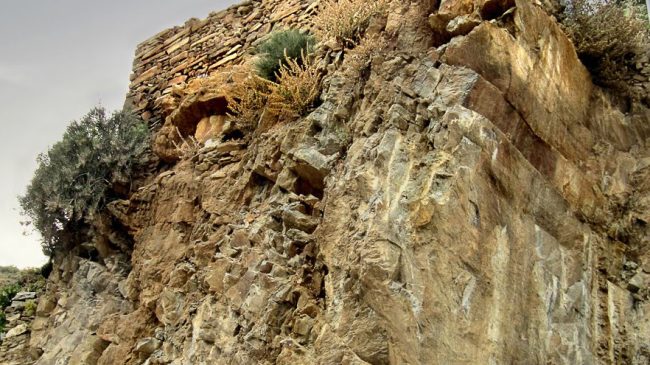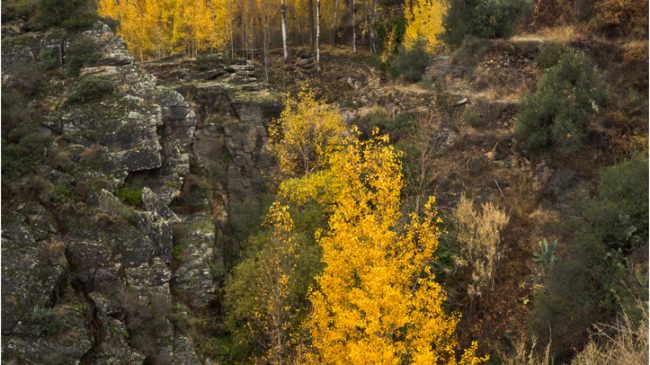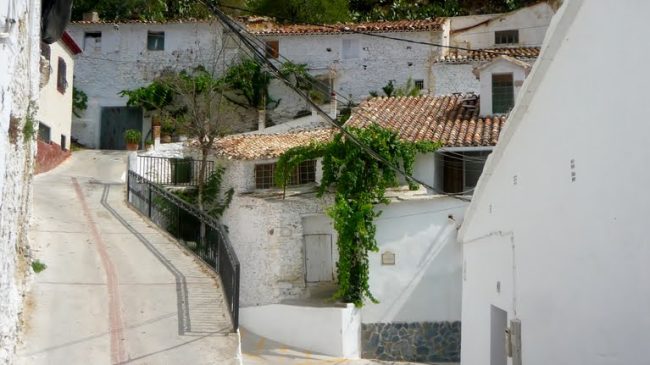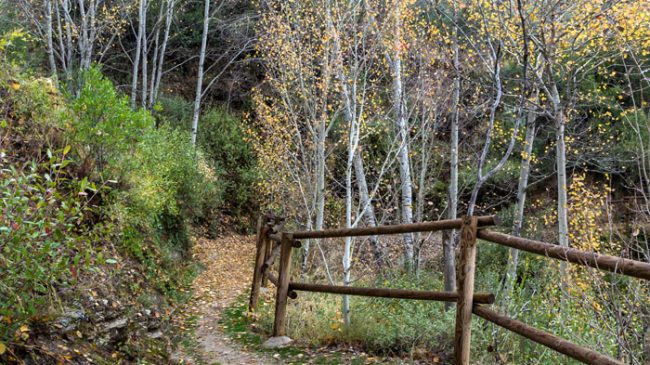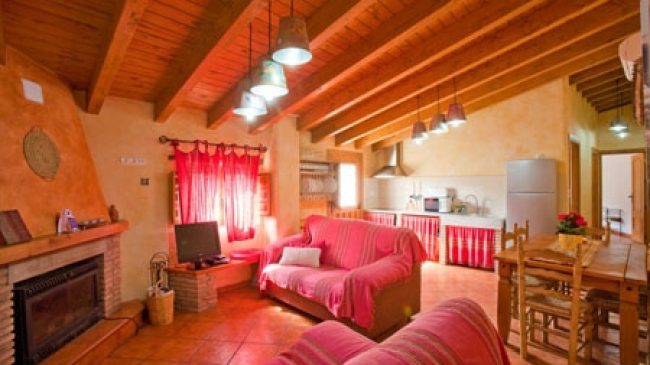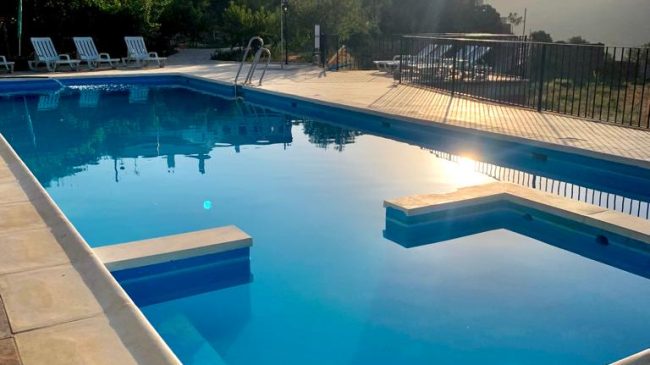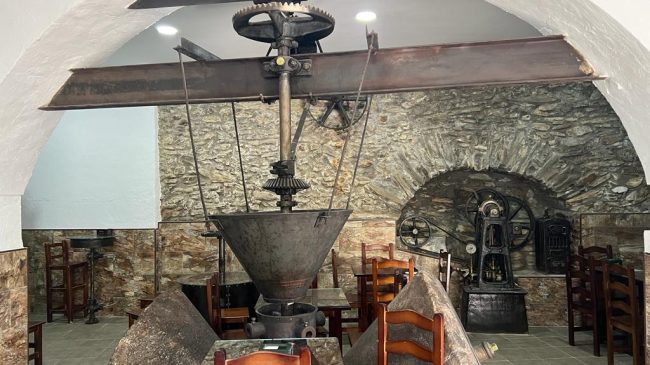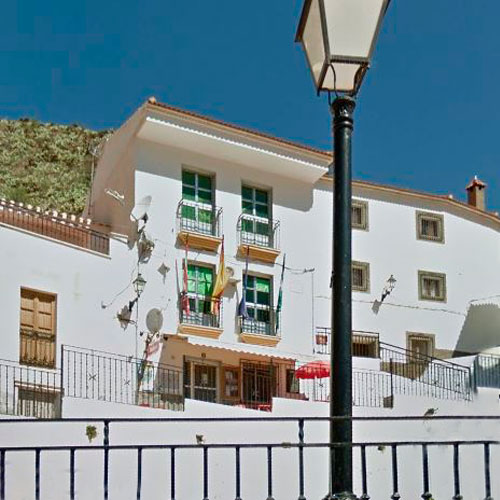INTRODUCTION
Laroya is located in the region of marble, in the middle of the Sierra de los Filabres, this village extends along a hillside, in mountainous and wild terrain where the predominant crops are the olive and almond trees.
As the mayor of Laroya is such an honor for me to welcome everyone who wants to discover the wonders of our town through this website.
Visiting Laroya is an experience full of centuries of history.
I would like this website to encourage everyone to discover and enjoy our town, wishing you a great stay that will make you come back for sure.
HISTORY AND ORIGINS
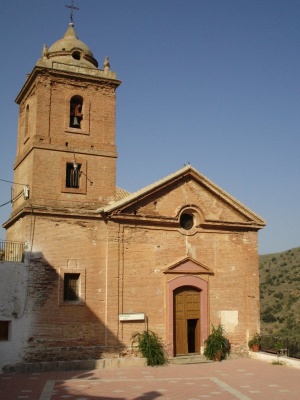
The first recalls about Laroya go back to the muslim era. This place was prosperous and rich in the marble region. We can find Laroya in between mountain ranges. It makes us think that according to tradition, the name “Laroya” comes from an arabic word that means “cooking pot”.
After the Catholic Kings (Isabel and Fernando) reconquest, Laroya is considered a city. Isabel and Fernando decided to regulate the political and legal regime of the city of Baza, Purchena and other cities, including Laroya.
Laroya is added to Baza at that time, and then came the moorish riots and a resettlement in the population.
In the Alpujarras War (1568 – 1570), there is a well known man, the moorish Alonso el Gazi. After the war, Laroya will be despopulated and then repopulated by inly twelve neightbours in 1579.
The evolution of Laroya through the centuries comes along with the evolution of the economy in the region. Its passage through history has always been united to the construction of major buildings, because of the amazing quality of the stone in this area.
Laroya has been inmersed in the fact that people emigrated to Almería and it made the population noticeably decrease. In the XVII century there were 400 people living in 90 houses in the town.
GASTRONOMY
Cereals are so present in the gastronomic tradition of Laroya. “Migas”, “gachas” and “olla de trigo”, are the most typical dishes.
Wheat crumbs. Pot of Wheat. Rice With Rabbit. Purchena fry (based on tomatoes and peppers). Stoned (Rice with cod and beans). Cod meatballs.
Sweets: Homemade “mantecados”, butter creps, “hornazos”, “buñuelos”, fried donuts.
HOLIDAYS AND TRADITIONS
SAN RAMÓN NONATO (AUGUST).
This is the biggest and greatest festivity of the town, and also the most famous, due to San Ramón Nonato being the patron saint of Laroya.
There is a parade in honor to the saint. There are also sportive competitions, some games for children and orchestral music concerts at night.
The “moorish and cristians” festivity (moros y cristianos) is the commemoration of a religious battle.
MOROS Y CRISTIANOS (AUGUST).
The first day the Moorish and Christian sides face each other in a bloodless battle in which texts are read and the Moorish wins.
In the second and final day of confrontation Christians win.
Between the two sides is a peculiar character, “The Baller” that iss treated like a spy by both sides and that ends up baptized after the defeat of theMoorish.
HOGUERAS DE SAN ANTON (JANUARY).
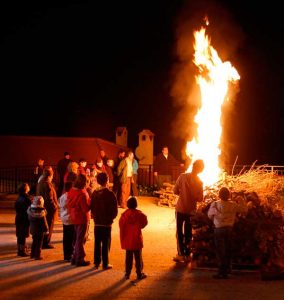
The fires light the streets. At night, the neighbours gather around the fire, where they eat meat, potatoes and sausages accompanied by some drinks. People keep singing and dancing all night long.
SAN MARCOS (25 OF APRIL).
It’s called snack day. Families and friends go to spend the whole day out in the field. Formerly the women took to them to eat the husbands to the field and since then this day is festive.
EL DIA DE LA CRUZ (MAY).
THE LAROYA QUARTERS
The Cuartetas of Easter Sunday are a festivity that has a great reception among the inhabitants of the region. One of the oldest popular traditions of Laroya and to which all inhabitants and acquaintances go without fail year after year.
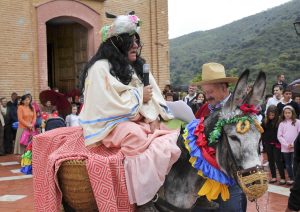 In it, the Quarter, dressed in the typical costume and climbed on a donkey disguised with colourists and donuts, recites in a characteristic way the rhymed verses in a critical and inoffensive way that is done to the people that something funny happened to him throughout of the year. That day it is forbidden to get angry if appointed for such a purpose. The quatrains are narrated accompanied by noisy and jocular sounds by means of trumpets and conches adapted for that purpose. The children also enjoy the presence of the quartet, playing to hunt the candies and jelly beans thrown at them. To appear in them, two requirements; the occurrence of something funny happening throughout the year and being married, being a bachelor or a priest.
In it, the Quarter, dressed in the typical costume and climbed on a donkey disguised with colourists and donuts, recites in a characteristic way the rhymed verses in a critical and inoffensive way that is done to the people that something funny happened to him throughout of the year. That day it is forbidden to get angry if appointed for such a purpose. The quatrains are narrated accompanied by noisy and jocular sounds by means of trumpets and conches adapted for that purpose. The children also enjoy the presence of the quartet, playing to hunt the candies and jelly beans thrown at them. To appear in them, two requirements; the occurrence of something funny happening throughout the year and being married, being a bachelor or a priest.
The quatrains begin to be elaborated beforehand on Holy Saturday, when the married ones get together to drink and between drinks they make them. Swallows that were formerly financed by the waiters of the place, in order to make them sharpen the wit and spend a Sunday of resurrection of the most friendly. They are recited on Easter Sunday in the Plaza de la Villa, always after the religious ceremony. At the exit of the temple, trumpets and sounds of conches announce the arrival of the Cuartetero of that year.
PILGRIMAGE OF THE VIRGEN DE ESTELLA (JUNE)
June becomes the ideal month to return to those ancestral traditions, to replenish those illustrious places and districts of the Sierra de los Filabres. With a lot of devotion among the inhabitants of the region, the Romería de Estella is above all a party in style.
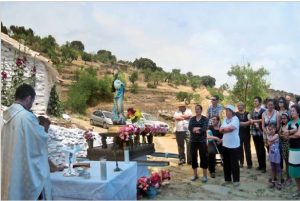 Estella, a large farmhouse anchored in the Sierra de los Filabres and whose name is believed to be due to the Christian reconquest and repopulation in honor of the famous Estella de Navarra, is the recipient of former inhabitants who dwelled, travelers, curious , devotees and pilgrims who want to have fun. The image of the Virgin of Estella, who spends most of the year in the Church of San Ramón Nonato de Laroya, travels on a pilgrimage to what was her original home. There, she will be the patron of a Eucharist erected in honor of the mother of God. At the end of the mass, the neighbors organize a fraternal meal for all those attending this demonstration of popular faith, enlivened with music and dances, in what was the ancient era, a magnificent place where once the wheat threshing process was carried out. In the afternoon, we return in procession with the sacred image to the temple.
Estella, a large farmhouse anchored in the Sierra de los Filabres and whose name is believed to be due to the Christian reconquest and repopulation in honor of the famous Estella de Navarra, is the recipient of former inhabitants who dwelled, travelers, curious , devotees and pilgrims who want to have fun. The image of the Virgin of Estella, who spends most of the year in the Church of San Ramón Nonato de Laroya, travels on a pilgrimage to what was her original home. There, she will be the patron of a Eucharist erected in honor of the mother of God. At the end of the mass, the neighbors organize a fraternal meal for all those attending this demonstration of popular faith, enlivened with music and dances, in what was the ancient era, a magnificent place where once the wheat threshing process was carried out. In the afternoon, we return in procession with the sacred image to the temple.
WHAT TO SEE
What to do in Laroya?
If you are thinking of taking a different trip to discover beautiful places and charming towns that are not usually well known, a trip to Laroya is an excellent option. Our town has many options to make and we recommend the ones that are sure to be of your interest.
WHERE TO SLEEP
WHERE TO EAT
DATA
Town Hall of Laroya
Direction: Plaza Constitucion, 1, 04868 Laroya, Almería
Web: http://www.laroya.es/
Contact: 950 12 84 25
 Where is the town hall?
Where is the town hall?

